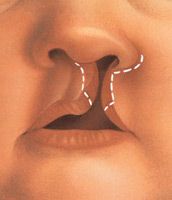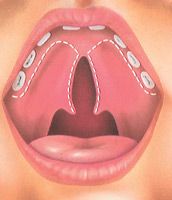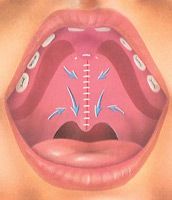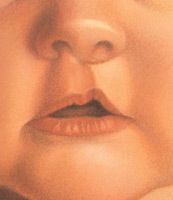
What are the steps of a cleft lip and palate repair procedure?
Step 1 – Anesthesia
Medications are administered for your child's comfort during the surgical procedures. The choices include intravenous sedation and general anesthesia. Your doctor will recommend the best choice for your child.
Step 2 – The incision
The goal of cleft lip surgery is to close the separation in the lip and to provide a more normal function, structure, and appearance to the upper lip. Incisions are made on either side of the cleft to create flaps of skin, muscle and intraoral tissue that are then drawn together and stitched to close the cleft and recreate typical lip and nose anatomy.
The repair of a cleft palate requires careful repositioning of tissue and muscles to close the cleft and rebuild the roof of the mouth. Incisions are made on either side of the cleft and specialized flap techniques are used to reposition the tissues of the hard and soft palate. This will include the repositioning of the soft palate muscles used in speech. The repair is then stitched closed, generally along the midline of the roof of the mouth, providing enough length of the palate to allow for normal feeding, speech development and continued growth throughout life.


Step 3 – Closing the incisions
Once the cleft lip and/or cleft palate has been repaired, the incisions can be closed with removable or absorbable sutures.

Step 4 – See the results
The resulting external scars of a cleft repair are generally positioned in the normal contours of the upper lip and nose. Over time, these will fade and your child's ability to grow and function normally will continue to improve.










